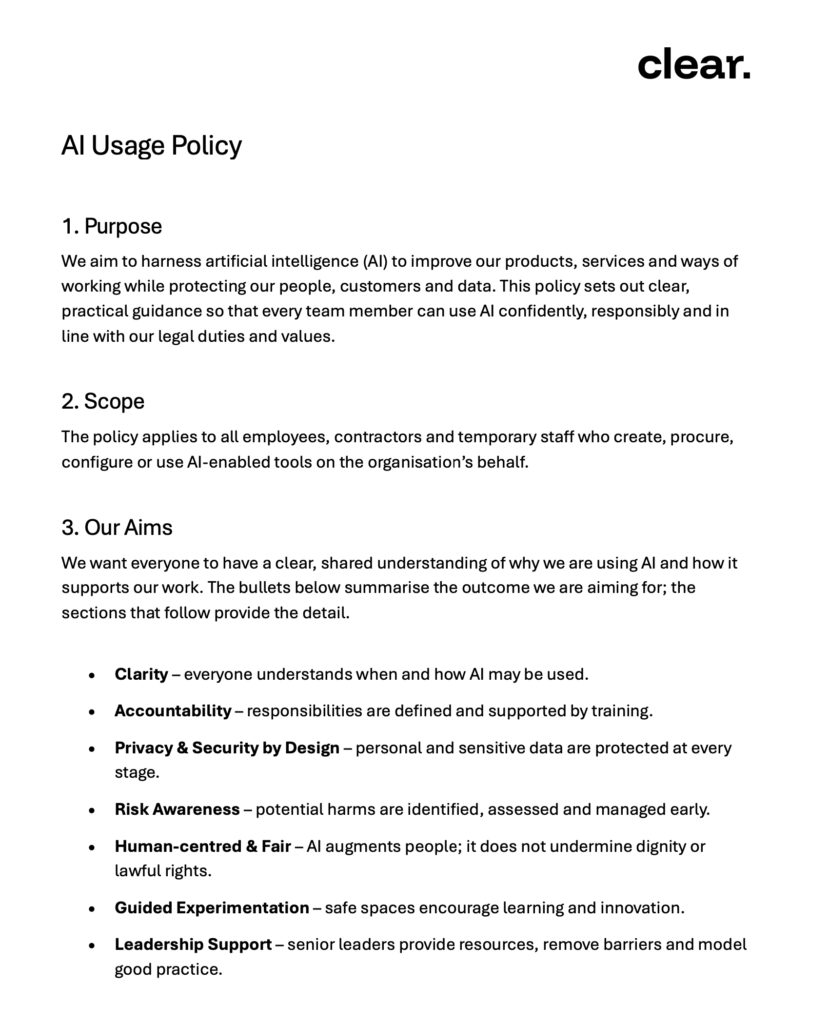There’s a dangerous knowledge gap in the market right now. Some people understand what AI can actually accomplish, whilst most organisations are still figuring it out. This creates opportunities—but also a hidden risk that could destroy your competitive position if you’re not careful.
As a business leader, you’re likely being pitched AI solutions daily. But here’s what concerns me: many of these solutions are being built inside a temporary window that’s closing faster than most people realise. And if you’re not careful, you might be building your competitive strategy on foundations that won’t exist in 12 months.
The gap that’s fooling everyone
Right now, there’s a massive disconnect between what AI can do and what most business leaders think it can do.
What AI can actually do today:
- Perform tasks on demand via a chat interface (text & voice)
- Automate entire business workflows from planning to execution
- Handle complex customer interactions indistinguishably from your best team members
- Generate sophisticated analysis and strategic recommendations
- Create professional-quality content, campaigns, and operational materials at scale
- Make nuanced business decisions with reasoning you can audit and understand
What most business leaders think AI can do:
- Answer basic questions in a chat interface
- Help with writing emails and simple research
- Maybe automate some straightforward tasks
- Provide basic customer service responses
This perception gap creates a temporary window where businesses with advanced AI understanding can appear to deliver miraculous results to those operating with limited knowledge.
The trap that’s catching businesses
Here’s where it gets dangerous. Many companies are building their entire competitive strategy inside this temporary knowledge gap, treating it as if it’s permanent.
I see businesses every week:
- Creating AI-powered services that will be obsolete when major platforms add native features
- Building tools that solve problems which AI will soon solve automatically
- Developing consulting practices around capabilities that will be commoditised within months
- Investing in solutions that big tech companies will integrate natively
These approaches assume the current market conditions will remain static. They won’t.
The platform reality check
The most dangerous assumption is that you can build a sustainable business around AI capabilities that the major platforms don’t already have or aren’t actively developing.
Consider what’s happening:
- Google and Meta are rapidly automating advertising management
- Microsoft is integrating AI across their entire business suite
- Salesforce is building AI into every customer interaction
- Amazon is automating supply chain and logistics operations
If your competitive advantage depends on AI capabilities that these platforms could integrate natively, you’re not building a moat—you’re building a sand castle at high tide.
The strategic blindspot
The real risk isn’t just about individual AI tools becoming obsolete. It’s about businesses making fundamental strategic decisions based on temporary market conditions.
When you’re planning your next three years, are you considering:
- What happens when your AI-powered service provider gets replaced by native platform features?
- How your competitive advantages change when AI capabilities become universally accessible?
- Whether your current operational model survives when AI execution becomes trivial?
- What your team structure looks like when AI can handle most routine tasks?
Most businesses aren’t asking these questions. They’re treating AI as just another tool rather than a fundamental shift in how work gets done.
The smarter approach: Building above the gap
The most successful businesses are taking a different approach. Instead of building inside the temporary knowledge gap, they’re building above it.
They’re:
- Developing organisational capabilities that become stronger as AI advances
- Creating decision-making frameworks that help them evaluate new opportunities quickly
- Building governance structures that let them adopt new technologies safely
- Establishing competitive advantages that improve as AI capabilities increase
These businesses understand that when technical execution becomes commoditised, success depends on better judgment, clearer priorities, and stronger strategic alignment.
The questions that actually matter
As AI becomes more capable and accessible, the valuable questions for your business change:
Instead of “What AI tools should we use?” ask “What happens to our industry when AI execution becomes free?” Instead of “How do we implement AI?” ask “What’s our competitive position when everyone has access to the same capabilities?” Instead of “What’s technically possible?” ask “What’s strategically defensible?”
The scarcity shifts from technical capability to strategic insight.
What this means for your business
Whether you’re running a professional services firm, manufacturing company, or retail operation, you need to honestly assess whether you’re building inside the gap or above it.
Warning signs you’re building inside the gap:
- Your competitive advantage depends on AI knowledge that others don’t have
- You’re investing in solutions that major platforms could integrate natively
- Your strategy assumes current AI limitations will persist
- You’re building around temporary market inefficiencies
Signs you’re building above the gap:
- Your competitive advantages get stronger as AI capabilities increase
- You’re developing organisational capabilities for continuous adaptation
- Your strategy accounts for rapid technological change
- You’re building relationships and trust that transcend any single tool
The time factor
The current AI knowledge gap is narrowing faster than most business leaders realise. Solutions that required specialist knowledge six months ago are becoming accessible to anyone. The competitive advantage of understanding AI is compressing rapidly.
But here’s the key insight: new gaps will continue opening as AI capabilities advance. The businesses that position themselves to navigate multiple waves of change—rather than just ride one—will build the most sustainable advantage.
A framework for strategic assessment
Here’s how to evaluate whether your AI strategy is building on solid ground:
The Platform Test: Could a major tech company integrate this capability natively within 12 months?
The Commoditisation Test: What happens to your competitive position when this AI capability becomes universally accessible?
The Strategic Depth Test: Are you building capabilities that get stronger as AI advances, or weaker?
The Adaptation Test: Can your organisation navigate the next wave of AI advancement, or are you locked into current assumptions?
The bottom line
The AI knowledge gap represents both an enormous opportunity and a significant risk. Companies that understand this dynamic can extract substantial value whilst building more durable competitive advantages.
But those that mistake temporary advantages for permanent ones—or worse, those that build their entire strategy inside a closing window—risk being left behind when the market inevitably catches up.
Your competitors are making strategic decisions based on information you might not have. The question isn’t whether AI will affect your business—it’s whether you’ll be positioned correctly when it does.
The gap is real. The opportunity is significant. But the window is closing.
The businesses that thrive in the next decade won’t be those with the best AI tools. They’ll be those with the best judgment about what’s strategically defensible when AI capabilities become universally accessible.
Don’t build your future on quicksand. Build it on foundations that get stronger as the tide rises.
Success in the AI era won’t come from having the most advanced technology. It will come from having the clearest understanding of what remains valuable when technology becomes commoditised.


